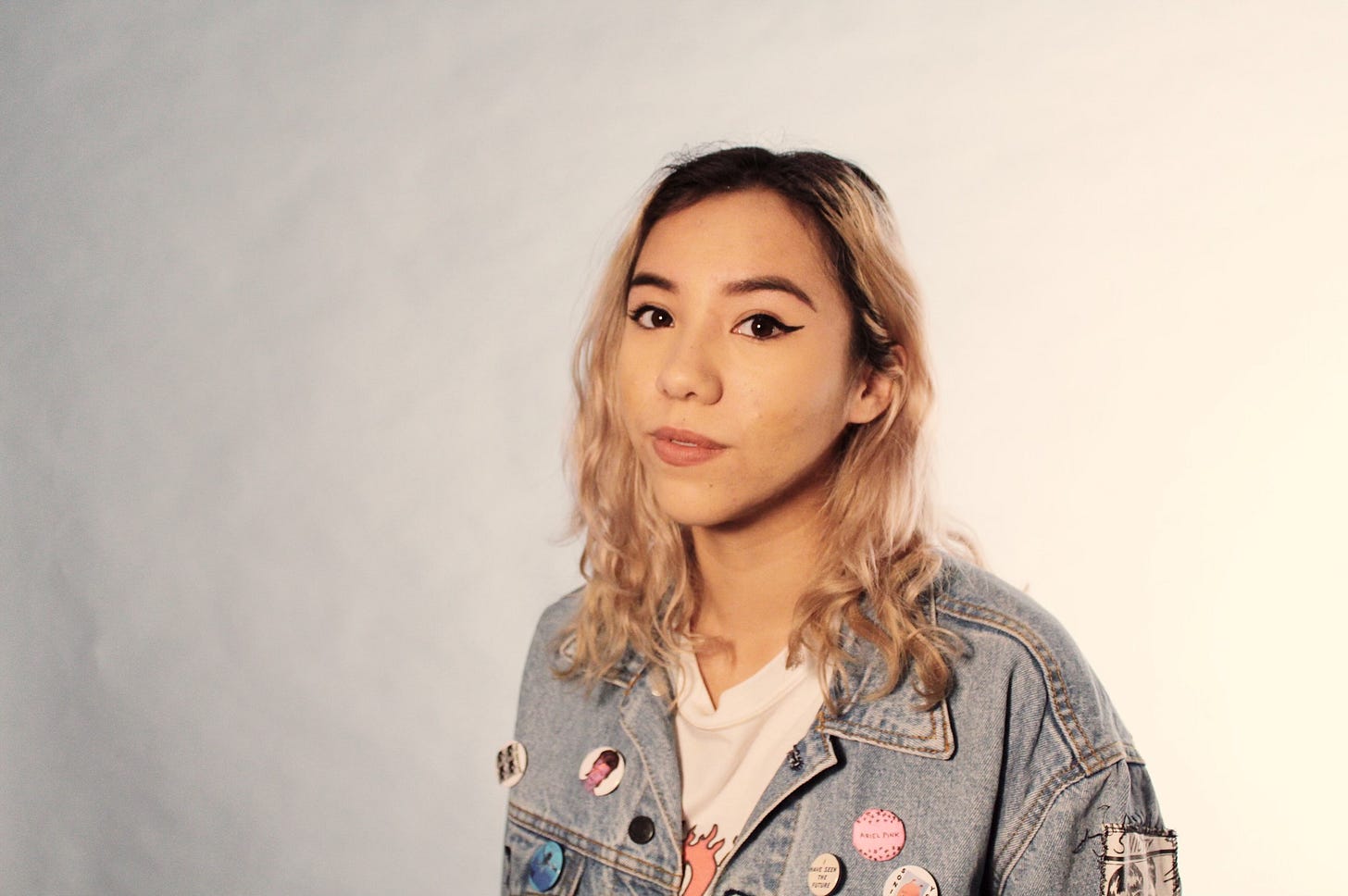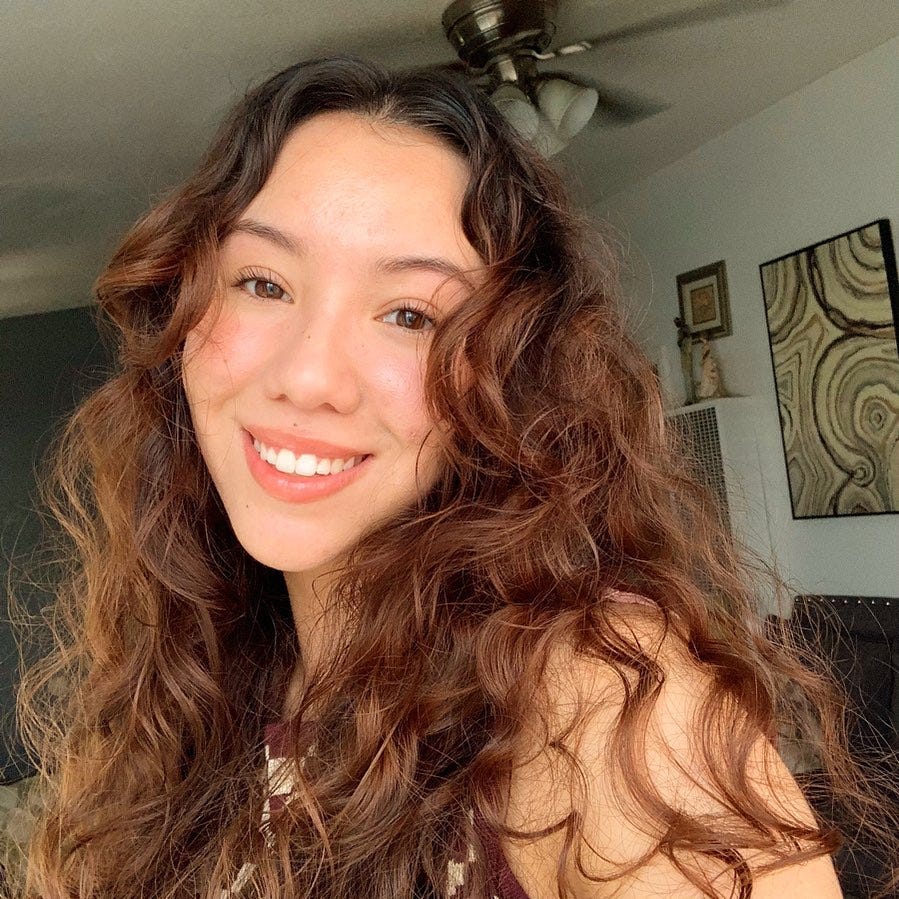“Oh my god, I LOVE it!” — It was the morning of a field trip my sophomore year of high school, and my friend Max was gushing over my new haircut. Known by my family and friends as having trademark long brown hair that I always wore down, I had decided it was time for a drastic change. Inspired by my obsession with Alexa Chung, whose photos I showed my hairdresser, I traded in my long tresses for a choppy lob à la Chung. Notorious for not being a fan of physical affection, Max hugged me out of sheer excitement and genuine admiration for the new look, a comforting confirmation that I had made the right choice.
I was no stranger to reinventing myself through my hair — only earlier that year I had attempted to dye my hair an Ariana Grande-esque red, which ended up being more like a burgundy-brown hybrid that was more noticeable in direct sunlight (I was 15! Not a stylist!). Still, I was delighted with my newfound method of being able to change with what I was interested in at the time. As a teenager with strict and traditional immigrant parents and a black sheep of the family, the ability to change my hair felt like a shimmering glimpse of freedom. Of course, my newly found juvenile amusement didn’t come without its downsides and lessons — I gave myself a homemade fringe I came to resent, bleached and nearly annihilated my naturally wavy-curly hair (more on that to come), and cut my damaged hair off so unevenly I had to get an Umbrella-style asymmetrical bob at the urgency of my hairdresser. Although living with my hair blunders left me feeling down and even a bit mortified, they sparked my interest in taking better long-term care of my hair and maintaining its integrity after years of abuse.

So, how does one start honoring their hair after maybe not being the best scalp parent? (Hairy godmother? Lock lover? Mane manager?) Here’s what I’ve learned (as an unlicensed professional):
1. Determine your hair type (and learn as much about it as possible).
Is your hair straight, wavy, curly, or coily? Is it fine, medium, or thick? Does it have high or low porosity? Is it damaged, does it get frizzy, is it dry, is it oily? These are all important attributes to take note of when starting your hair journey. The reality is that a lot of people don’t actually know much about their hair, and are put at a disadvantage when trying to build a routine that works for them. Determining your hair type can help you select the right products to achieve all your hair dreams. My biggest piece of advice is to never stop learning about your hair. Follow hairstylists, hair content creators, trichologists — hell, follow your friend of a friend you met once that had great hair. But never stop being curious about your hair and asking questions; it’s the best way to pick up new tips and tricks and learn more about maintaining your precious tresses.
2. Build a haircare routine — and stick to it.
Finding out what works for your hair is a combination of trial and error, patience, and devotion. The best way to figure out what works for your hair is to build a routine: shampoo, conditioner, styling products, treatments, the whole shebang, and stick to it for at least a month so you can gauge what’s working. As an example, I have fine curly hair and my goal is always volume and definition, so I tend to avoid any heavy conditioners or styling creams in my routine that can weigh down my hair and make it look flat. My routine in a week usually consists of washing my hair with Ouai’s Fine Hair Shampoo or Living Proof’s No Frizz Shampoo (both shampoos designed for fine hair, which is why knowing your hair type is so important!), and using their accompanying conditioners. I like to do a protein or bond-building treatment (think Olaplex) at least once a week to help promote hair health as well, since I have dyed my hair and use heat styling tools here and there. For you, this may look a lot different; perhaps you need to wash your hair less frequently with a shampoo and co-wash, perhaps you need a shampoo that’s formulated for thick hair, or perhaps you want to treat a scalp condition such as dandruff. Knowing your goals and what does and does not work for your hair is an important part of maintaining its health!
3. Be gentler with your locks.
A giant leap towards healthier hair can actually just be cutting back on heat styling, being gentle when detangling, and using a microfiber towel and patting dry after washing your hair.
Cutting Back On Heat Styling
While you don’t have to give up heat styling completely, the benefits of engaging in it less often are rewarding enough to minimize how often you use it. And when you do use heat on your hair, use a heat protectant. It doesn’t have to be anything fancy, any drugstore heat protectant is enough to reduce the damage caused to your locks when you use a curler, blow dryer, or flat iron. The goal is to ensure you never use heat on your naked locks, so any heat protectant will do! A personal favorite of mine is Tresemme’s Keratin Smooth Heat Protectant Spray; it’s only $7 and widely accessible at most retailers, alongside doing its job well.
Use The Right Tools To Detangle
Detangling your hair can be such a tedious task that sometimes you just wish you could click off your scalp like a Lego set (although not a very glamorous visual). Using the right tools when you detangle not only simplifies a dreadful process, but can also help reduce the amount of strands you find on your brush after going all Top Gun on your tresses. A solid wide-toothed comb (I have a personal bias towards Crown Affair because their combs have been super sturdy for me, but any wide-toothed comb will do!) or a Wet Brush can help you gently and effectively detangle your hair. If you have particularly thick hair that’s difficult to detangle with a brush or comb and conditioner alone, try incorporating a spritz or two of leave-in conditioner/detangler in your post-shower detangling routine. The detangler combined with a detangling brush or comb will help protect you from ripping out strands of hair, and allow for your brush or comb to easily glide through your locks. Odele makes a great affordable detangler spray, but if you want to get a little fancier with it, Ouai makes a leave-in conditioner/detangler spray with a signature scent of bergamot, violet, and white musk (it also doubles as a heat protectant!).
Using A Microfiber Towel To Pat Dry
As tempting as it is to want to squeeze and rub the excess water of your hair with a regular terrycloth towel, this can aggravate your strands and create frizz, which we want to avoid (unless you want to replicate the “Before” picture from Princess Diaries for whatever reason, in which, I support you). The workaround for this is using a microfiber towel and gently patting your hair dry rather than wringing it out with a towel, which can be harsh on your hair and build friction. And before you’re like, “GEEZ LADY, do you think I’m made of money?”, do not fear if you don’t feel like buying a new towel! You most likely have a just-as-great (and eco-friendly) alternative lying around your house; an old cotton t-shirt works wonders for drying your hair, and is much gentler than using a regular towel.
4. Incorporate hair treatments into your routine.
Scalp conditions, heat styling, bleaching and coloring, and even sun damage (Yes, your hair is subject to the effects of UV rays as well!) can negatively impact your hair’s health over time, and if you have curly hair, can even ruin your curl pattern. Incorporating protein, moisture, and even bond-building treatments into your routine can help improve the appearance, feel, and overall health of your hair.
After I bleached my hair and went practically platinum, I compromised the health of my hair and needed to “nurse” it back to health and rebuild its integrity. My favorite treatments while I was repairing my hair were the Elizavecca Cer-1000 Collagen Ceramide Coating Protein Treatment and the Aphogee Two-Step Protein Treatment. A treatment like Elizavecca’s can be utilized weekly, while Aphogee’s is more intensive and should only be used every 3-4 weeks as needed. Protein treatments helped breathe life back into my hair and bring back curl definition, which was relieving for me as someone who thought their hair was, for lack of a better term — completely fucked.
Not only does bleaching and dying your hair weaken its integrity, but you’re also prone to a dryness in the like of the Sahara Desert. Deep conditioning and moisture treatments are your friend when you frequently bleach/dye your hair, and while that sounds like costly maintenance, one of the best deep conditioning treatments I used while rebuilding my hair’s health was Aussie’s 3 Minute Miracle, at a grand total of $4. While there are extensive options for deep conditioners, and I would always advise to use products your stylist recommends vs. what you read from every random girl with a Substack newsletter, a drugstore deep conditioner is accessible and will do.
I only recently started getting into bond-building treatments, and while they aren’t a necessity, they are a beautiful testimony to science and beauty, and they work to help repair damage to your hair. Bond-building treatments can be expensive, but if you want to splurge in the name of hair health, Olaplex No. 3 and the K18 Hair Mask are two amazing and raved-about options to consider.
5. Trim Your Hair — Often
It may sound counter-productive to have to trim your hair frequently for it to grow, but it’s a necessary aspect of securing long strands (if that’s one of your goals!) and getting rid of damage, such as split ends. Hair well, splits at the end when you have split ends, so growing your hair with them present is a no-go. Aim to trim your hair every 3 months to get rid of any bleach or dye damage (which can also help bring back your natural waves/curls if you lost them!) and split ends.
6. Cut Your Hair To Suit Your Desired Look
It probably seems like a no-brainer to cut your hair the way you’d want it to look, but what if you don’t know what that is, exactly? The best way to know what type of hair cut would suit you is to consult with a licensed professional that knows how to cut hair to best frame your face and features. Don’t be afraid to consult with different stylists and look around — not every stylist is suited to each individual. For example, if you have curly or coily hair, you may want to see a stylist that has proof of past work on curly and coily hair. It isn’t a bad thing to be selective about who you cut your hair with — you want to feel comfortable and also achieve your desired result! Consulting with a hair stylist also allows you to ask questions and see if a style would work for you, as well as visit alternative hairstyles you may not have thought about before. My advice would be to have a Pinterest board of all the haircut inspiration you have that you can present to your stylist when you consult with them.
Ensure that you’re cutting your hair to suit your goals as well! If the goal is volume for fine hair, ask for lots of volume-boosting layers. If the goal is retaining length but giving style and shape to the hair, ask for long layers. If you want to add more balance to your face shape, consider a fringe or curtain bangs. A flattering cut can really change the way you look, so don’t be afraid to ask as many questions and show as many reference pictures as possible when talking to your stylist.
7. Kill Your Curiosity By Always Experimenting
My philosophy when it comes to my hair is that it’s an extension of myself — who I am, what I’m interested in, what my style is like, etc. Hair can be just as much of a statement as clothes or makeup, so if you have a desire to make your hair look a certain way, don’t be afraid to experiment! I’ve dyed my hair extensively in the past couple of years alone, added curtain bangs, styled it differently, etc. The beauty of hair is that there’s always a way to make it look different and reflective of your personal style. Don’t feel the need to live in regret of not living out your hair fantasies — if you want to dye your hair red, do it. If you’ve been wanting a mullet, do it. If you’ve been wanting incredibly extravagant floor-length extensions, do it. Hair can feel like a childhood bedroom — you should adorn it and decorate it the way you see fit!




